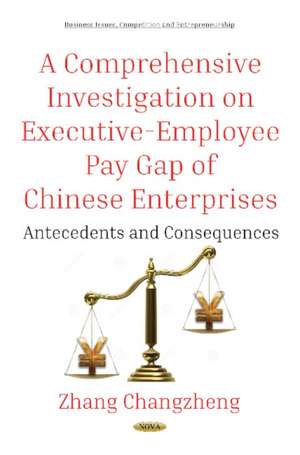A Comprehensive Investigation on Executive-Employee Pay Gap of Chinese Enterprises: Antecedents and Consequences
Autor Zhang Changzhengen Limba Engleză Hardback – apr 2018
Preț: 1628.95 lei
Preț vechi: 2089.03 lei
-22% Nou
Puncte Express: 2443
Preț estimativ în valută:
311.70€ • 324.80$ • 258.09£
311.70€ • 324.80$ • 258.09£
Carte disponibilă
Livrare economică 13-27 martie
Preluare comenzi: 021 569.72.76
Specificații
ISBN-13: 9781536128130
ISBN-10: 1536128139
Pagini: 545
Dimensiuni: 178 x 254 mm
Greutate: 0.95 kg
Editura: Nova Science Publishers Inc
Colecția Nova Science Publishers Inc
ISBN-10: 1536128139
Pagini: 545
Dimensiuni: 178 x 254 mm
Greutate: 0.95 kg
Editura: Nova Science Publishers Inc
Colecția Nova Science Publishers Inc
